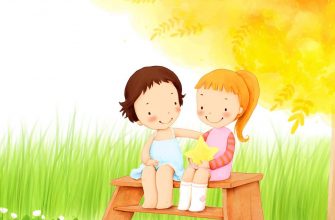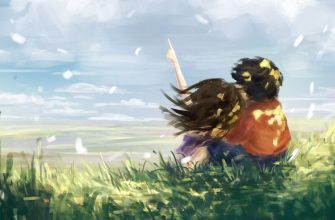Топик по английскому: Pantomime
Pantomime
This paper is about pantomime, about it’s origin, it’s people, how it has evolved, and how wonderful it is.
Pantomime is a dramatic performance in which a story is told or a theme developed through expressive bodily or facial movement. The origin of pantomime can be traced back to classical farce and the Italian Commedia Dell’arte. Not all pantomime is silent. The completely silent performance of pantomime was invented in Rome. Pantomime is sometimes used to worship. Mime is a short way of saying pantomime and also means someone who performs pantomime. A mime, if performing on the streets, will have a hat that is passed around for spectators to put money in.
When doing pantomime, it should be noted that the imaginative performance skills are illusion and illustration. Also, you should «cultivate an understanding of the role that the body plays in suggesting an idea, an impression, a sensation, or a character.» Pantomime can be done solo, or in a group of any size. Before performing, a mime must do warm-up and relaxation exercises. Miming takes mental and physical strength. Perfect coordination of all parts of the body is essential for expressive movement and graceful poise in pantomime. A good mime must be very flexible. You must be fluid at changing posture to create a character. Facial expression changes everything while performing pantomime. You must be very relaxed when doing pantomime.
People speak different languages, but most gestures mean the same thing. Animals, insects especially, have probably done pantomime before humans were even alive. For example, bees do pantomime when telling others where nectar is, and peacocks use pantomime to impress a mate.
Prehistoric man was next, after animals, to do pantomime. Prehistoric men would do pantomime to try to influence nature to let them get a kill while hunting. Before language, prehistoric men told about a hunt with pantomime. Prehistoric men would use pantomime to tell the history of the tribe.
A clown named Grock became a very successful mime. He started as an acrobatic clown at a very young age. Grock became famous because he succeeded in the circus and in the music hall.
After years of successfully performing in circuses, he tried his clown routine in a theater in Berlin. Grock began to move away from broad comedy in the Grimaldi tradition, and towards Debureu’s type of performance. In his first performance in a theater, the audience did not respond. Grock realized that the type of performance required for the theater is different than that required by the circus.
Grock began to use a clown as a pantomime character whose actions comment on life. Grock went on to become one of the greatest performers of the variety stage. Grock used music to portray man’s struggle with fate, just like Beethoven, but in a different way. Before Grock would play violin, he would throw the bow up in the air and try to catch it, but miss. Then he would retreat behind a screen to practice and the audience could see the bow flying above the screen. He returned to face the audience and missed again. He became so flustered that he threw the bow in the air and caught it without even knowing it!
When Grock sat down on the piano bench to play piano and found that it was too far from the piano, he would struggle to push the piano closer to the bench! Like all good comedy, this reflected man’s struggle to tame nature.
The circus was saved from too much clown tradition in the 1940’s by a man named Emmett Kelly. The costumes were getting too elaborate. The usual clown costume descended from the vari-colored costume of the Roman mimes. Originally, it was intended to symbolize rags, like the clown was an impractical guy who didn’t get along in the real world. A long evolutionary process ended up with vari-colored, but elaborate costumes. The costumes reached some sort of peak when the Harlequin costumes of the English pantomime had as many as fifty-thousand sequins on them. Emmett Kelly brought back the original idea and wore a tramps costume of actual rags. The usual clown make-up is a bright colored pattern which serves as a trademark for each clown. Kelly wore make-up to match his raged costume. He invented his own intimate style of pantomime in, but almost independent of, the circus. Kelly would beg peanuts from kids in the audience and then break the shells with a huge hammer, completely! shattering the peanut, and then search stupidly for the meat among the debris.
Clowns of the modern circus are called «Joeys» after Joseph Grimaldi. In the modern American circus, there are many able clowns including Lou Jacobs, Paul Wenzel, Otto Griebling, Paul Jung, and Freddie Freeman, but they are almost overwhelmed by the sheer size of the circus.
Modern circus clowns depend on acrobats, costumes, and mechanical stunts to perform, but a mime just has gestures. The technique of the circus clown is limited by the conditions under which he performs, therefore, there is a tendency for any successful idea to be repeated so much that it becomes a tradition. Most of the clowning is done in what is called a clown promenade, or walkaround, in which the clowns circle the arena while performing so that each spectator might see a complete performance. Each clown performs something different. It is difficult to think of gags to perform while walking in a parade. One could carry a heart that lights up like a neon sign when he sees a pretty girl, another could drive a really small sportscar, or one may wear a trick costume which enables him to change from an old lady to a midget, and back again. One clown may run away from a stuffed tiger that is attached to him by a thin wire.
As you can probably see, pantomime has changed over the years and there have been ups and downs during the change. There were also some performers who saved, or played a big part in the history of pantomime.
Campbell, Patricia J. Passing The Hat: Street Performers in America, New York City, Delacorte Press, 1952 Evans, Cheryl and Smith, Lucy Acting & Theater, Tulsa, EDC Publishing Hunt, Douglas and Kari, Pantomime: The Silent Theater, New York City, Atheneum, Kipnis, Claude, The Mime Book, New York City, Harper and Row publishers, 1974 May, Robin, Looking at Theater, New York City, Marshal Cavendish Corporation, 1989 «Mime and Pantomime» Academic American Encyclopedia, 1982 ed., vol. M-13, p. 434 Mordden, Ethan, The Fireside Companion to Theater, New York City, Simon and Schuster Inc., 1988 Ratliff, Gerald Lee, The Theater Student: Speech and Drama Club Activities, New York City, Richards Rosen Press, Inc., 1982 Stolzenberg, Mark, Exploring Mime, New York City, Sterling Publishing Co., Inc., 1979
Урок по английскому языку «Что такое пантомима?»
Учебный предмет: английский язык
Учитель: Кащеева М.А.
Класс: 8
Авторы УМК: О.В. Афанасьева, И.В. Михеева, К.М. Баранова
Тема урока: «Что такое пантомима?» (What is a Pantomime?)
Тип урока: комбинированный урок, урок «открытия » нового знания
Цели урока: изучить материал по теме «Пантомима», строить связные ответы и высказывания, вести диалог и строить монологическое высказывание в рамке предложенной темы.
Задачи:
Просмотр содержимого документа
«Урок по английскому языку «Что такое пантомима?»»
Учебный предмет: английский язык
Учитель: Кащеева М.А.
Авторы УМК: О.В. Афанасьева, И.В. Михеева, К.М. Баранова
Тема урока: «Что такое пантомима?» (What is a Pantomime?)
Тип урока: комбинированный урок, урок «открытия » нового знания
Цели урока: изучить материал по теме «Пантомима», строить связные ответы и высказывания, вести диалог и строить монологическое высказывание в рамке предложенной темы.
Образовательная – закрепить лексические навыки по теме «Театр»;
Развивающая – совершенствовать грамматические навыки (Развивать у учащихся умения задавать вопросы собеседнику, правильно и логично отвечать на них, строить монологическое высказывание в рамках подготовки к ОГЭ)
Воспитательная – поддержание интереса к учению и формирование познавательной активности учащихся и развитие умения слушать и взаимодействовать друг с другом.
Познавательная – расширение культурологических знаний.
Закрепление лексики по теме «Театр».
Совершенствование навыков чтения.
Совершенствование навыка вести диалог и строить монологическое высказывание ( используя опоры и без опор)
Развитие грамматических навыков построения утвердительных и вопросительных предложений.
Личностные: Уметь выбирать оптимальные формы во взаимоотношениях с одноклассниками.
Коммуникативные: Уметь слушать и воспринимать собеседника. Планирование учебного сотрудничества с учителем и сверстниками — определение цели, функций участников, способов взаимодействия. Учиться ассоциативно мыслить.
Познавательные: Уметь осознанно строить речевое высказывание по образцу, формулировать ответы на вопросы учителя и одноклассников, задавать вопросы.
Регулятивные: Самостоятельно формулировать цель учебной деятельности. Уметь планировать свою деятельность в соответствии с целевой установкой, толерантно относиться к различным мнениям учащихся
Моделировать ситуации поведения в классе. Осуществлять самоконтроль и анализировать допущенные ошибки
1.Организационный момент. Warming up. “How are you today? What topic are we studying these days?” Do you like theatre? Do you often go to the theatre? Whom do you usually go to the theatre with?” When did you go to the theatre last? What did you see?”
Listen to the text and say what kind of art it is about. Be ready to choose the right items to complete the sentences. (ex.1 p.92 звучит текст.)
Guess what the theme of our lesson is. What is this text about? Well, can tell me what we are going to speak about today?
3. Эмоциональный настрой
Have you ever seen a Pantomime? Who has seen it? Did you see it at the theatre or on TV? Did you like it?
I see, some of you haven’t seen it and can’t speak about it. What should we do to be able to speak about it? (to find some information about a pantomime. ) What should we do during the lesson to achieve this aim?
to work with the text
to work with information
to do some exercises
What is a pantomime? (It is acting without speech).
Let’s play a little. I’ll give you my definition of a pantomime. Listen, remember and repeat from the beginning.
Pantomime is a technique. Pantomime is a dramatic technique. Pantomime is a dramatic technique of communicating. Pantomime is a dramatic technique of communicating through gesture. Pantomime is a dramatic technique of communicating through gesture without speech.
Is it important to study Pantomime? Why? (построение логических цепей рассуждений)
These words may help:
develop a very powerful tool, the human body;
the language of the heart;
help to understand different gestures;
make us think and analyze;
teach us to understand different emotions and feelings;
help to understand people better;
help to speak effectively;
can improve our social skills;
helpful when you speak different languages.
Comment on these statements: (прокомментируйте утверждения)
I agree …. I disagree ….
The language of action is universal. b) Actions speak louder than words.
So everybody agrees that the language of action is universal. Now look at me and try to guess what my gestures mean.
Work in pairs. Get ready to show each other different gestures. Let us guess what they mean.
Face is the index of mind. Our eyes, eyebrows, lips express our feelings. Our gestures and postures, our walking style and hand movements are also very important. Look at the pictures of children and try to guess what their emotional states are…
Слова даны на доске (happy, excited, confused, worried, shocked. )
According to the social anthropologist, Edward T. Hall, in a normal conversation between two people, less than 35% of the social meaning is transmitted by words and at least 65% is conveyed through the body.
But is it enough to be able to speak about this kind of art? What else do we need to speak about it? (We need some information) What information do we need?(about its history, characters)
Чтение с общим охватом содержания + поисковое чтение
Your home assignment was to read the text about the history of a pantomime. Let’s complete the sentences after it. (ex.4 p.88)
Socializing. (Stand up. Work in pairs. Ask and answer the questions.)
Can you say that a pantomime tells a story? Are the stories new or well known? Can you name them? When and where did a pantomime appear? What were the traditional characters in Italian or French pantomimes of the 16 th century? What does the mime mean? When did pantomimes first appear in Britain? When do they usually show pantomimes in Britain nowadays?
Пантомима это актерская техника общения посредством жестов без использования речи. Истории обычно хорошо известны. Это Золушка, Алладин и его лампа, Кот в сапогах, Спящая красавица, Снежная королева и другие.
Пантомима полна музыки и танцев. В пантомиме часто клоуны и животные. Хорошая пантомима очень смешная, но в ней часто есть и урок. Дети узнают что такое хорошо, что такое плохо и о настоящей любви.
Слово «пантомима» пришло из Греции. «Mime” означает «имитировать». «Panto» означает “все». Мимы никогда не говорят, но они используют свои тела, лица и руки, чтобы рассказать историю.
В 16 веке группы актеров путешествовали по Италии и Франции. Герои были всегда одни и те же: Арлекин, Коломбина и Панталоне.
Первая пантомима в Англии появилась в 1721. Сейчас это пьеса для детей и показывают ее на Рождество.
Get ready to speak about a pantomime.
— the history of a pantomime
— when it appeared in England
— when it is traditionally performed
Let’s remember the aim of our lesson:
to find information about a pantomime and to learn to speak about it.
Have we found the necessary information in the text?
Have we done any exercises?
Have we learnt to speak about it?
So, have we achieved our aim? Are you satisfied with your work today?
Thank you for your work during the lesson. Your marks are….









